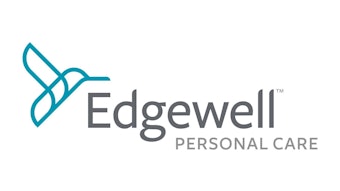- Within the next four years, the body care market is expected to grow by 5.3% per year, with the highest increase in Latin America. The slimming body care segment will have a significant impact on that growth, especially in Asia (5.9% CAGR) and in Latin America (8.3% CAGR).
- Specific products for leg care is a developing niche segment of the beauty market, but the demand for leg beauty and well-being is high. Liposuction is the most popular beauty surgery procedure and there are about 220 product launches per year globally dedicated to leg treatment.
- Trans fats, mainly present in processed food, are considered as a significant public health concern. Their damaging impact on the body, and especially on stimulating the expansion of fatty tissue, opens the door to a new category of body contouring products.
Today's modern life’s routine is crazy—running to business appointments, school, shopping, dancing... all the way down to stiletto heels. Lack of time for a balanced and healthy diet leading to an excessive consumption of fast food and take out, combined with the many changes that occur to various parts of the body with age (the accumulation of tummy fat, swelling of ankles, loss of tone and deformation of legs, the formation of unsightly veins, leg discomfort, sagging arms, the appearance of cellulite and more) ensure the body is not spared, and it is more than challenging to keep it glamorous and comfortable. Luckily, beauty and cosmetic scientists are constantly thinking about making women’s life easier, and more and more active ingredients have been developed to pamper the harshly treated body of the modern woman.
The Body Care Market: A Deep Changing Landscape
The body care market is less dynamic than the face care market, but, according to Mintel data, it shows a constant increase in terms of product launches and retail volume. (Figure 1) In 2012, the global body care market reached $16.4 billion. The financial crisis impacted the market's retail value in Western Europe and North America, which showed stagnation back in 2011 and 2012, and those consumers began buying more mass or masstige products than premium ones. However, in places like Asia and Latin America, the body care market has become dynamic for both mass and premium brands. (Figure 2) The body care market in Latin America has now reached the same size as in Europe, and the Asia-Pacific and North American body care markets likewise now have the same size. The landscape of the body care industry has completely changed in the last five years.
In terms of growth, 2011 was a contemplative year for body care. Many brands and manufacturers delayed their launches, but 2012 brought regained body care activity. The highest increases in launches happened in the Asia-Pacific and European regions, where 200 and more than 300 new body care products, respectively, appeared on the market. (Figure 3a and Figure 3b)
Globally, the highest represented claim in body care is for moisturizing—63% of the total body care launches between 2008 and 2012 carried this claim. In Asia, body brightening products are very popular, while slimming products launches have not been very numerous. This trend can be explained by, first, a longer product life cycle for the slimming products, and, second, by the fact that slimming products are not considered essential in times of crisis. Nevertheless, slimming products generated $2.5 billion globally in 2012, representing 15% of the total body care market and making a consumption of 30 million liters of product. And there have been approximately 220 new launches dedicated to leg care.(Figure 4)
Anti-aging for Legs
In today's fashion culture, oftentimes a stylish woman must be wearing high heels—and even stilettos. Those strains, as well as the constraints of an active life, make it a real challenge to keep beautiful, sexy and relaxed legs.
It is important to work every day to keep legs in shape and promote blood flow within the skin so legs remain beautiful for as long as possible. Engaging in regular physical activity and in systematically massaging the legs helps. The skin of the legs is exposed to gravity, and the fluid flow in the skin of the legs is limited. Fluid tends to pool in the lower part of the leg, around the ankles, progressively diminishing skin tone and other qualities. Subsequently, the muscles appear less sculpted and fat accumulates, thereby changing the shape of the leg.1
The constriction experienced by the tissues due to the accumulated fat leads to negative consequences. The membranes become fragile. The active participation of nitric oxide (NO), direct oxidation processes or oxidation through free iron generates proteases and mediators in a poorly controlled fashion, and these substances can be destructive to the dermis. Proteolysis weakens the structure of dermal tissue, making it less elastic and less able to support the associated structures within, like vein walls, which tend to stretch due to the lack of effective support. This decreased support perpetuates the phenomenon and leads to destructive, widespread micro-inflammation which can, with time, involve feelings of discomfort and premature aging in legs.
An active ingredient designed to improve the negative aspects of this phenomenon, preventing excessive NO formation and fighting against proteases in the dermal matrix was developed by Sederma. The ingredient, Legance, a vegetal extract of Zingiber zerumbet, a variety of ginger, is obtained by supercritical CO2 extraction, an eco-friendly production mode. By inhibiting the inflammatory phenomena leading to lipid storage and water retention, Legance restores more dynamic circulation in the legs and relieves the sensation of tiredness. The mechanism of action was elucidated thanks to extensive in vitro tests, and two substantial clinical studies, one being conducted by a phlebologist, have demonstrated its efficacy. (See Figure 5a and Figure 5b.)
Fighting Against Junk Food Damage
As today's modern lifestyles and furious pace leave little to no room for a balanced diet or proper exercise, many of today's consumers are also finding themselves with expanding waistlines. The regular consumption of junk food results in a high intake of trans fatty acids, which are known to create and maintain in adipose tissue a chronic inflammation characteristic of obesity. In fact, the U.S. Food and Drug Administration has announced plans that it will require the food industry to gradually phase out all trans fats, as it has found trans fats to be a threat to people's health.2
Developed to help address some of the concerns related to a growing waistline, Intenslim is a slimming active ingredient designed to fight against fat predominantly accumulated in the stomach area. It offers a global approach on three levels. First, by lessening the inflammatory condition generated in the adipose tissue in the presence of trans fatty acids, Intenslim™ sustains the fight against fat storage. At the same time, it boosts the burning of the stored fat by the stimulation of desnutrin, the key and primary enzyme of lipolysis.3 Finally, in order to support the adipocyte volume reduction related to the destocking of fat, Intenslim promotes the synthesis of elastin by adipocytes to help return them to their original shape.
Sederma laboratories evaluated the synthesis of elastin by adipocytes, and an in vivo two-month study demonstrated significant and visible results on the stomach area. The mean reduction of the stomach’s circumference was 0.99 cm, and up to 3.90 cm. The excessive abdominal fat was strongly reduced and the stomach area was found to be visibly flatter. (See Figure 6a and Figure 6b.)
With such innovations and ongoing developments, it's possible to take on some of life's more crazy challenges while also offering the body some respite and help. Such body care ingredients help provide body care products to keep the body glamorous and comfortable.
References
- AG Warren, BA Janz, LJ Borud and SA Slavin, Evaluation and management of the fat leg syndrome, Plast Reconstr Surg, 119, 9–15 (2007)
- http://www.fda.gov/Food/PopularTopics/ucm292278.htm
- JA Villena, S Roy, E Sarkadi-Nagy, KH Kim and HS Sul, Desnutrin, an adipocyte gene encoding a novel patatin domain-containing protein, is induced by fasting and glucocorticoids: ectopic expression of desnutrin increases triglyceride hydrolysis, J Biol Chem, 279, 47066–47075 (2004)
Olga Gracioso, Head of Marketing and Communication, joined Sederma 13 years ago. After graduating in with degrees in biology and biochemistry, she obtained a master of cosmetic science degree at the Faculty of Pharmacy University of Paris and began her career at Bourjois/Chanel in the evaluation laboratory. Gracioso entered the world of cosmetic ingredients in the marketing department of Solabia in 1998. She is a member of the French Society of Cosmetic Chemists and was a member of the board from 2002 to 2004.

!['Snoopy and Woodstock are cherished [characters] across generations and pairing them with our most-loved body care essentials creates a collection that feels classic with a modern twist. This launch is about celebrating our community with something unforgettable while starting an exciting new era for the brand,' said Luis Garcia, Chief Marketing Officer.](https://img.gcimagazine.com/mindful/allured/workspaces/default/uploads/2025/10/tree-hut-peanuts-fullcollection-fall26-1x1-1253.lGcuurUszp.jpg?auto=format%2Ccompress&fit=crop&h=191&q=70&w=340)








